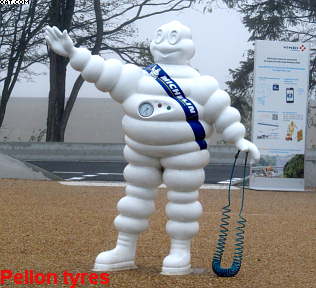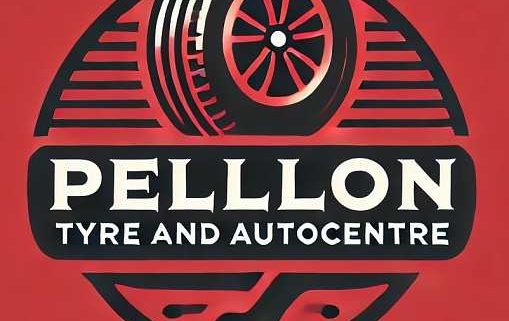Table of Contents
The History of Michelin Tyres

The History of Michelin Tyres
The History of Michelin Tyres – and Why They’re Still a Great Choice for UK Drivers
When you see that little man made of tyres (the Michelin Man, aka Bibendum), you’re looking at a brand with more stories than your average rubber. But behind the name is a tale of invention, daring moves, and a constant push for better performance. Let’s take a journey from Clermont-Ferrand in France to the roads of Halifax and beyond.
From Two Brothers and a Bicycle Tyre (1889) The History of Michelin Tyres
Michelin’s story begins in 1889. Two brothers, Édouard and André Michelin, founded their company in Clermont-Ferrand, France. Wikipedia + 2 Michelin + 2
Interestingly, their first big inspiration came when a cyclist arrived at their workshop with a punctured tyre that was glued to its rim. The repair was tedious. The brothers wondered, “What if the tyre were removable?” That question led them to patent the first removable pneumatic tyre in 1891. MICHELIN Guide + 2 tyreland.ie + 2
That innovation helped them succeed in early motorsport and cycling races. In fact, in the same year, a rider named Charles Terront used their removable tyre in the Paris–Brest–Paris race. tyreland.ie + 2kellertyres.co.nz + 2
Building Reputation & Innovation – The History of Michelin Tyres
Since its inception, Michelin has consistently strived to exceed expectations. Over the decades, they’ve been behind many “firsts”:
In 1906, Michelin set up its first factory outside France, in Turin, Italy. Encyclopedia Britannica + 1
In 1911, they established their first UK headquarters and a tyre-fitting depot in London — Michelin House in Chelsea. Wikipedia
In 1948, Michelin introduced steel-belted radial tyres (radial construction) — a huge leap in performance and durability. Encyclopedia Britannica + 2 Auto Universum + 2
In the 1970s, they launched the TRX tyre & rim system, which was an ambitious attempt to redesign tyre and wheel to work together. It had performance benefits but also limitations (special rims required). Wikipedia
More recently, they’ve worked on PAX run-flat systems (now discontinued) and Bib-Mousse (for off-road bikes) innovations. Wikipedia + 1
Throughout, Michelin’s ethos has been: innovate to give safer, more efficient, longer-lasting tyres.
The Michelin Guide – More Than Just Tyres
You may have heard of the Michelin Guide and Michelin stars for restaurants. That all started as a marketing & utility tool. In 1900, the Michelin brothers published a small guide (given out free) with maps, hotels, and garages—basically useful information to help people travel more and burn more tyres. The Straits Times + 3 Escoffier + 3 MICHELIN Guide + 3
Their aim? Encourage more motoring, which in turn pushes tyre usage (and purchases). Over time, the guide evolved to include reviews and the famous star ratings. Escoffier + 2 The Straits Times +2
Here’s a fun detail: the Michelin House in London has stained glass windows and tiles featuring Bibendum — part of the company’s early way of turning branding into architecture. Wikipedia
Michelin in the UK & Local Touches – The History of Michelin Tyres
Michelin House, in Chelsea, London, became their UK depot in 1911. Wikipedia
The building still stands, now a mix of shops, offices and restaurants—its front has mosaic work of Bibendum holding nuts, bolts and hazards, with “Nunc Est Bibendum” (“Now is the time to drink”) inscribed. Wikipedia
Over time, Michelin expanded manufacturing, R&D and distribution across Europe — today, they operate in more than 170 countries with dozens of production sites. MICHELIN Guide
Why Michelin Tyres Still Matter for UK Drivers (Including in Halifax) The History of Michelin Tyres
So, after all that history, why should someone in Huddersfield or Halifax pick Michelin today? Here’s what still holds strong:
1. Proven quality and reliability
Because they’ve been pushing the boundaries for over a century, Michelin tyres are associated with durability, grip and consistency.
2. Innovation still at the core
Michelin keeps investing in materials, environmental performance (lower rolling resistance, eco-friendly compounds), electric vehicle compatibility, and safety tech.
3. Wide availability & support network
As a major brand, they have a good supply in the UK, meaning easier sourcing, fitting and replacement options — which means less waiting around for your customers.
4. Good resale & trust factor
When someone sees “Michelin” on your product list, it gives confidence. Especially for buyers who may not be tyre-savvy, the name carries weight.
5. Local angle you can play
You can mention you stock Michelin tyres (for cars/vans) in Halifax, offer fitting and replacements, and explain why the investment pays off long-term (fewer replacements, better grip in UK conditions).
